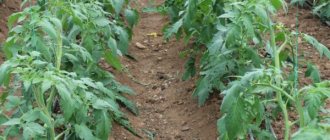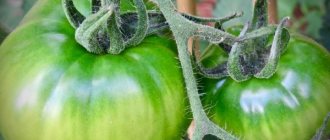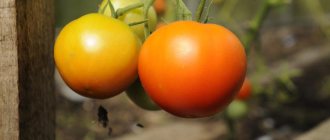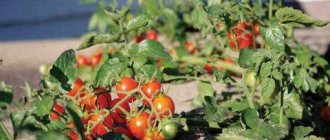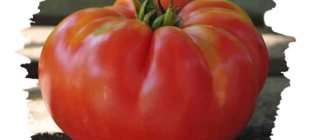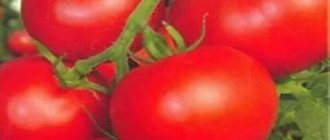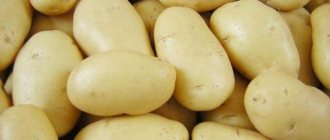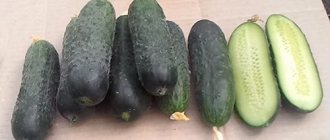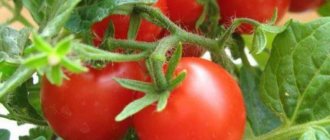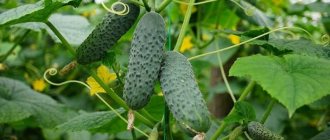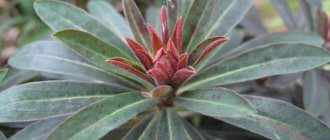History of creation
The Rio Grande variety was bred in Holland. It is not included in the State Register of the Russian Federation, but has become widespread due to its excellent characteristics and high consumer properties.
Designed for cultivation in open and closed ground. In regions with a cool climate, it is recommended to plant under film. Can be grown in containers on verandas or glazed balconies. Seeds are sold by the Siyanie Central Plant, many agricultural companies and seed centers, so they are always available and correspond to the declared properties.
Description
The Rio Grande tomato is a famous variety that is already considered a garden classic. For many years it has been grown en masse on personal plots and on an industrial scale. In addition to the above characteristics, the variety is valued for its long-term fruiting and universal use. Tomatoes of this variety do not react too much to soil acidity, drought and high humidity, cool weather, and even to errors in care.
Rio Grande is a full-fledged variety, so you can collect the seeds yourself. But it is recommended to update the seed periodically (every 3–4 years) to prevent degeneration.
The bushes of this variety are compact, determinate type with little foliage. The height of the shoot is limited by the limit established during selection: after reaching 65–70 cm (in a greenhouse - up to 1 m), the shoot stops growing and a fruit cluster forms at its end. Thanks to this form, along with long-term fruiting, Rio Grande is often grown indoors.
Related article:
How to feed tomato seedlings on the windowsill?
The variety is characterized by average ripening periods, which depend on the climatic characteristics of a particular region. The first harvests can be harvested 105–120 days after sowing the seeds:
- in the south of the country - at the end of June;
- in the temperate zone - in early July.
Fruiting in Rio Grande is one of the longest for this crop and usually lasts until frost.
The fruits are medium in size, slightly elongated in shape (the so-called “cream”) with a rich red, dense, but not hard, glossy skin. The inner part is occupied mainly by the pulp - the seed chambers are not large, there are few seeds, and there is almost no juice. The taste is slightly sour, with a pronounced tomato aroma. If the fruits are collected at the stage of technical maturity, then in a warm room they ripen quickly, and in the cold they can be stored for up to 90 days while maintaining their original qualities.
Related article:
Caring for tomato seedlings after picking
Planting Rio Grande in a permanent place
If the seedlings are planned to be grown indoors, then they are simply transferred to the holes. For open ground, seedlings must be hardened off for 2 weeks. Take it out into the open sun for 10 minutes first. On the second day, the time spent outdoors is increased by half an hour. And so they continue to increase each next day.
The healing properties of goat fat, its benefits and harm to health
For determinate type plants there is no need to install supports. Therefore, they simply prepare the area and mark it for the holes. There are up to 5 plants per 1 m². Before planting, you can add 1 - 2 tsp to the holes. complex fertilizer and transfer the plants without exposing the root system.
Seedling care
Planting a Rio Grande tomato and relying on reviews from gardeners regarding plant care, we can say that care is not difficult, even for novice tomato lovers.
- It is necessary to water the sprouts correctly.
- Weeding the plantings to remove weeds and loosening the soil are mandatory.
- It is necessary to fertilize the plants several times and carry out virus prevention.
- Promptly combat insects and other pests of nightshade crops.
Water the seedlings only with warm water, at the root, once a week, but generously. Weeds must be removed carefully, without touching the root system, which is located in the top layer of soil.
Many microelements are suitable for fertilizing tomatoes. The first to be used are preparations that contain phosphorus, and the second is treated with potassium fertilizers. You can use organic matter that you prepare yourself. For 1 part organic matter, take 1 part water and place it in a warm place for fermentation. After 10 - 15 days, the resulting substance is diluted with water 1:10, filtered and watered the plants.
Main characteristics
Rio Grande is characterized by the following parameters:
- bush: not spreading, medium height (up to 70 cm);
- leaves: dark green, have a simple, traditional tomato shape;
- length of lashes: up to 70 cm;
- number of ovaries on one shoot: up to 10;
- weight of 1 fruit: average – 110 g, maximum – 150 g;
- seed chambers: 2–3;
- fruit color: deep red;
- pulp: dense, with a high dry matter content.
Few leaves grow on the shoots, which eliminates the need for pinching.
Productivity
On one Rio Grande bush, up to 10 fruit clusters are formed, each of which produces an average of 8 fruits. With an average weight of one of 110 g, the total yield for the season is 9–10 kg per bush. If after planting you don’t take care of the tomatoes at all, this figure will decrease by 2 times.
Related article:
Tomato leaves turn yellow in greenhouses and open ground: what to do?
The traditional planting scheme is 4 bushes per 1 sq. m. Accordingly, from an area of this size you can harvest 40 kg of tomatoes per season. The yield of marketable products is 98%.
Area of application of fruits
Fleshy tomatoes of this variety contain virtually no juice. Therefore, squeezing it to obtain fresh juice is quite difficult - you will only get a small amount of thick liquid, more like tomato paste. This is the only use for which the Rio Grande is not suitable. In all other respects, it has a universal purpose.
These tomatoes are great for fresh consumption, especially in slices, salads, and sandwiches, as they completely retain their structure and release almost no juice. They also make excellent additions to other snacks, hot dishes, and sauces.
The variety is optimal for all types of preservation. The fleshy, dense pulp is ideal for drying, drying, and freezing.
Due to their thick skin, tomatoes do not crack under moderate heat treatment. The same skin provides them with excellent shelf life and transportability, as well as the possibility of mechanized harvesting, which is most relevant for mass cultivation on farms.
Related article:
Tomato Yablonka of Russia - description and characteristics of an early ripening variety
Types of diseases in tomatoes
The susceptibility of plants to diseases, including the nightshade family, is influenced by a number of factors: from the composition of the soil to the plant’s ability to resist disease. Rio Grande is a tomato variety that can be susceptible to disease. The most common of them are considered to be gray rot, late blight and mosaic.
Adding mineral fertilizers and additives to the soil will allow tomatoes to effectively resist the development of harmful microorganisms and the effects of insect pests.
Diseases and pests
Rio Grande is very resistant to the most common infections that affect this crop (late blight, rot, mosaic, verticillium, fusarium). But it does not have absolute immunity to diseases, so to minimize the risk of infection, you need to follow the rules of agricultural technology and carry out preventive treatments.
Preventive measures include the following:
- when grown in a greenhouse - annual soil renewal with disinfection with copper sulfate;
- when planting in beds, observe crop rotation (desirable predecessors are legumes, cabbage, undesirable predecessors are all nightshades);
- mulching with humus;
- moderate watering.
Of the pests, the greatest damage to tomatoes is caused by slugs and aphids. They can be destroyed with insecticides, but only before budding begins. In the future, it is recommended to use folk remedies:
- from slugs - sprinkle the soil around the plants with crushed shells, lime, pine needles or spray with a solution of ammonia;
- against aphids - treat the ground part with a saturated soap solution or infusions of onion, garlic, citrus peel.
Related article:
Proper watering, fertilizing and caring for tomatoes
To repel other pests, plants with a spicy aroma should be planted around the perimeter of the bed.
Features of cultivation
No super-special manipulations are required when growing tomatoes of this variety. The Rio Grande tomato, or rather its seeds, are planted as seedlings in pots and germinate in a warm place. The seeds themselves do not need to be treated with anything before planting; the caring Dutch did all this before selling them. If the seeds are good, they were bought in a specialized place, and not in an underground passage for 15 rubles. for a package with an error in the name of the variety, then they cannot fail to germinate. From a warm place, the sprouted seedlings are taken out into the sunlight in early May, and there they still live in the pot for a day, getting used to the new conditions. If it is already more than 15 degrees outside, then the stems can be safely planted in the ground. Only the strongest sprouted shoots with at least five leaves are suitable for such a responsible task. It takes 125 days from the germination of the stems to the beginning of ripening. The bush itself grows to a height of about 50-60 cm. The fruits set well even at high air temperatures. This variety is resistant to parasites and diseases, so there is no need to treat bushes or seeds with poisons.
If the climatic conditions of the area allow, the Rio Grande tomato variety can be grown without seedlings. This makes life very easy for the gardener. He simply goes outside one fine May day, looks at the thermometer, which shows 15 degrees and above, takes seeds, plants them in a hole, waters them and waits. The only thing you need to work on is to dig a hole deeper, in case unexpected frost strikes at night (even in May this sometimes happens).
Advantages and disadvantages
Summarizing all the qualities described above, we can highlight the following advantages of Rio Grande tomatoes:
- consistently high yields with a long fruiting period;
- excellent taste;
- compact bushes that do not need to be tied up or pinched;
- low maintenance requirements;
- resistance to drought, waterlogging, cold temperatures;
- immunity to the most common diseases;
- ability to ripen after harvesting in green form;
- excellent keeping quality and transportability;
- universal use;
- the possibility of harvesting mechanically.
The disadvantages of the variety can be considered relative, since they include a not very pronounced tomato taste and a small amount of juice.
Photo
The quality of the fruit, its shape and methods of planting, its description in the photo are especially clearly visible.
You can also watch a video where the gardener will tell you how this variety of tomatoes grew in the open ground.
Tomatoes of this type are an excellent choice for any beginner and gardener who wants a bountiful harvest, ease of care without fuss and good taste. It is suitable for preparing a real abundance of delicious dishes, and thanks to the possibility of long-term preservation, you can receive vitamins in their pure form until winter.
Planting and care
In temperate climatic conditions, tomatoes of this variety are planted mainly using the seedling method. Seeds are sown in containers at the end of the first half of March, using loose soil. When preparing the soil mixture yourself, it is recommended to mix humus and garden or garden soil, and then disinfect it by watering it with a saturated solution of potassium permanganate or calcining it in the oven for half an hour.
Related article:
Tomato Tsarsky Gift - description and characteristics of a high-yielding variety
Planting material purchased at seed centers or other specialized retail outlets is completely ready for planting and does not require pre-sowing treatment. Seeds collected independently from your own plot must be disinfected by soaking in the same solution of potassium permanganate, and then in a growth stimulator.
You can sow seedlings in a common container, as tomatoes tolerate diving well. But using individual cups or peat tablets right away will significantly reduce further labor costs.
The algorithm for growing seedlings should be as follows:
- the seeds are slightly buried in the soil, a little peat is poured on top and watered through a scattering nozzle or sprayer;
- cover with film or glass lid;
- leave in the room at +23⁰С…+25°С until germination;
- Periodically, as the top layer dries, spray with warm water.
Related article:
Growing different varieties of tomatoes
When sprouts appear, the film/glass is removed and good lighting is provided to the young plants. To do this, the containers are placed on the windowsill of a south-eastern window and additionally illuminated with a lamp, creating daylight for at least 14 hours.
If seedlings are grown in a common container, then after the first pair of true leaves appear, they are planted into separate cells, disposable or peat cups. Transplanted plants are immediately fed with complex mineral fertilizer. A second similar feeding is carried out before transplanting to a permanent place.
Also, 10–12 days before planting in the ground, seedlings begin to harden. To do this, the containers are taken outside, gradually extending the “walk” time.
Tomatoes are planted 4 seedlings per 1 sq. m. When determining the timing of planting work, it is necessary to take into account not only the recommended time, but also the degree of heating of the earth both on the surface and at the planting depth. At these levels the soil should warm up to +15°C.
Important! Preparing a bed for tomatoes
In the south of the country, Rio Grande is often grown by direct sowing into the ground, which is carried out in the second ten days of May. To do this, seeds are sown in holes or furrows, watered, sprinkled with fertile soil and a film cover is arranged.
Related article:
Two buckets from each bush or how to achieve high tomato yields
During the season, tomatoes are fed twice:
- 2 weeks after transplanting, a solution of superphosphate (2 tablespoons per 10 liters) is added to the seedlings using the root method at the rate of 1 liter per bush;
- During the period of mass formation of ovaries, plants are fertilized with potassium salt (1 tbsp per 10 l), also 1 liter per bush.
In addition, tomatoes are provided with simple care, including the following activities:
- watering as the top layer of soil dries, best by the root method using a drip irrigation system;
- loosening after each moistening;
- weeding if necessary (usually 4–5 times per season).
Powerful, low shoots of Rio Grande do not need garter. There is also no need for bush formation and pinching. But to prevent the development of infections, it is recommended to remove leaves and tie up shoots with tassels that lie on the ground.
Related article:
Proper watering, fertilizing and caring for tomatoes
The Rio Grande variety is excellent for growing on any scale, even by inexperienced gardeners. Good immunity, resistance to unfavorable conditions and violations of agricultural technology, as well as versatility in use make these tomatoes indispensable both in summer cottages and on farms.
Reviews from those who planted
Next, we presented reviews of Russian gardeners who have been growing Rio Grande tomatoes on their plots and greenhouses for several years now. Basically, they are all positive, but you can find out the peculiarities of growing these bushes. We hope they will be useful to you and you will make the right decision.
Elena Viktorovna, Moscow region
Lyudmila Borisovna, Leningrad region
Natalya Tarasovna, Oryol region
Elena Viktorovna, Chelyabinsk region
Svetlana Ivanovna, Novgorod region
Inna Mikhailovna, Ryazan region
Maria Petrovna, Lipetsk region
Nikolay Vasilievich, Rostov region
